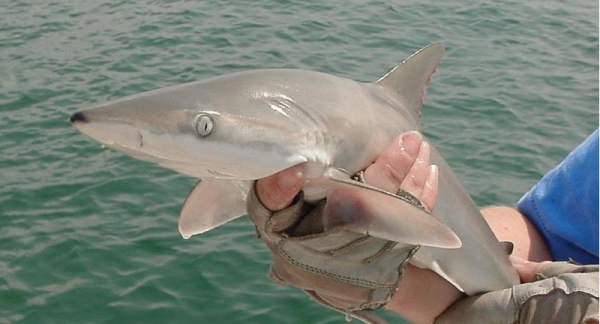
Southeast US coastal sharks populations have been diminishing recently. Of the seven shark species, only one showed a dramatic increase which is the blacknose shark, thanks to the passing of fishing regulations during the early 1990's following decades of deteriorating shark statistics.
The biggest reason for the declining numbers is shark-overfishing that generally takes place along the coastal shores in the southeastern part of the U.S. The shark statistics is reduced by 60 to 90 percent in contrast to the non-fished status. In 1993, the National Oceanic and Atmospheric Administration's (NOAA), National Marine Fishery Service ratified a shark fisheries management plan that regulated commercial and recreational marinas as well, according to PHYS.ORG.
The lead scientist and graduate student at William & Mary's Virginia Institute of Marine Science, Cassidy Peterson said, "We've shown that after over two decades of management measures, coastal shark populations are finally starting to recover and reclaim their position as top predators, or regulators of their ecosystem. Our research suggests we can begin to shift away from the era of 'doom and gloom' regarding shark status in the United States."
Peterson collaborated with other researchers stating that their study is based on the integrated data of scientific surveys which totaled to six. The study took place along the US east coast as well as in the Gulf of Mexico from 1975 to 2014. The conducted research suggested a more precise and positive outlook in comparison to earlier studies which depended on an analysis in just one location or commercial fishery wharves.
The combination of information from all six surveys enabled the researchers to assess the population movements for the seven coastal shark species, namely; the blacktip, sandbar, tiger sharks, spinner, including smaller species Atlantic sharpnose, bonnethead sharks, and blacknose sharks. The team likewise discovered a connection between shark figures in addition to the fishing pressure and significant patterns in climate.
Meanwhile, in Queensland, shark drumlines have been posted outside famous river mouths to safeguard swimmers from a possible shark attack. Usually, bull sharks frequent the area and lie in wait for its prey, The Courier Mail reported.
Since last year, preferably July, nets or drumlines with baits have caught a total number of 27 sharks on the Gold Coast while 23 have been captured on the Sunshine Coast. With the establishment of drumlines and shark nets which started in the 1960's, there was not a deadly shark attack at the Queensland beach which is always being surveyed.



